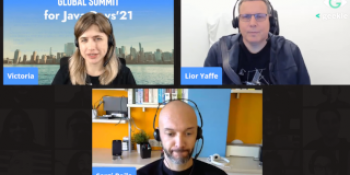10 things about the JPL
01 五月 2019
- What is the JPL?
JPL stands for Jelurida Public License – an open source license similar to the popular GNU GPLv2 and GNU GPLv3 open source licenses. Both Nxt and Ardor software are released under the JPL.
- What is the main difference between the JPL and the GPL?
The main difference is that the JPL has a 10% airdrop requirement. This means that clones of Nxt will have to allocate 10% of their tokens to NXT holders proportionately to their account balances and clones of Ardor will have to give away 10% of the forging tokens (their parent chain tokens) to IGNIS holders proportionately to their account balances. The account balances shall be based on a snapshot taken not earlier than three months before the launch of the clone.
- Are there any other important differences between the JPL and the GPL?
Yes, other important difference is that, as a consequence of the 10% Airdrop requirement, internal use (a private or permissioned clone) is not allowed except for an evaluation purposes no longer than three months. This is because a private/permissioned blockchain clone cannot fulfill the Airdrop requirement.
- Is there any airdrop requirement in case of a “hard fork”?
In case of blockchain split (the so called “hard fork”) the forging token holders (NXT or ARDR holders) will have by definition the same amount of tokens on the Nxt or Ardor fork. There is no additional airdrop requirement in this case.
- If I make a clone of a fork, do I still need to do an Airdrop?
Yes, you still need to satisfy the 10% Airdrop requirement to NXT/IGNIS holders.
- If I make a clone of a Nxt/Ardor clone, do I still need to do an Airdrop?
Yes, you still need to satisfy the 10% Airdrop requirement to NXT/IGNIS holders.
- Can I put my copyright notice to the software?
Yes, if you have made copyrightable modifications to the Nxt/Ardor software, you can put a copyright notice to them. But by all means you should keep the existing copyright notices, i. e. 2013-2016 Nxt core developers, 2016-2018 Jelurida IP B.V., 2023-2024 Jelurida Swiss SA.
- Do I have to release the source code of the software of my clone?
Yes, you should release the source code at the same time when you release any downloadable binaries. The source code should be accessible from the same place where the binaries are.
- Under what license should I release the software of my clone?
You should release it under the Jelurida Public License and also include the full text of the JPL in it.
- Can I sell licenses for private or permissioned blockchains for the software of my clone?
Since your clone will be a derived work based on Nxt/Ardor software and the JPL does not allow you to release it under any license other than the JPL, you cannot sell licenses or create private blockchains for third parties, unless you have obtained a permission or have reached an agreement with Jelurida to do so.


